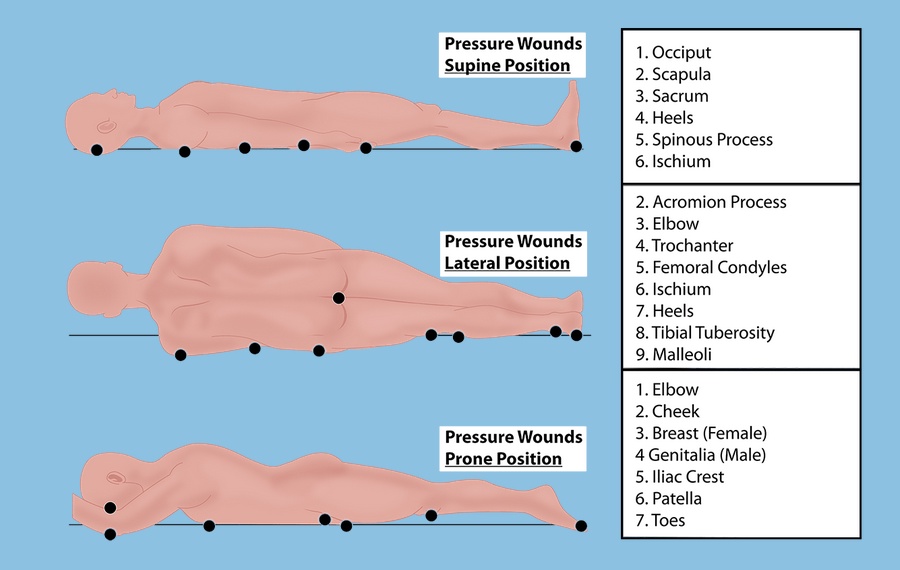Chronic wounds, particularly arterial and venous leg ulcers, pose a significant healthcare challenge worldwide. These ulcers cause discomfort and pain and lead to prolonged healing times, increased risk of infections, and reduced quality of life for patients. However, recent advancements of Advanced Oxygen Therapy Inc have brought about a promising solution: hyperbaric oxygen therapy (HBOT) in hyperbaric chambers.
Understanding Arterial and Venous Leg Ulcers
Venous and arterial leg ulcers are two distinct types of chronic wounds, each with underlying causes and characteristics. Arterial leg ulcers typically result from poor blood circulation in the arteries, often due to peripheral artery disease (PAD) or atherosclerosis. Reduced blood flow deprives the tissues of oxygen and nutrients, leading to tissue damage and ulcer formation, typically on the lower legs or feet.
Venous ulcers primarily stem from chronic venous insufficiency, a condition in which the valves in the leg veins fail to function correctly. Healthy veins have valves that prevent blood from flowing backward, ensuring it moves toward the heart. When these valves weaken or become damaged, blood pools in the veins, leading to increased pressure. Over time, this elevated pressure can damage the surrounding tissues, causing ulcers to develop.
Several factors to contribute to the development of venous ulcers
In contrast, venous ulcer develops due to venous insufficiency, where faulty valves in the veins impede blood return to the heart, causing blood to pool in the legs. Over time, this blood pooling increases pressure in the veins, leading to inflammation, tissue breakdown, and ulceration, commonly occurring around the ankles.
Hyperbaric Chambers: A Revolutionary Approach
Hyperbaric oxygen therapy involves delivering 100% oxygen to patients in a pressurized environment, typically inside a hyperbaric chamber. The increased atmospheric pressure allows the lungs to absorb higher levels of oxygen, which then dissolves into the bloodstream and promotes healing at the cellular level.
For patients with arterial leg ulcers, hyper chamber helps enhance oxygen delivery to the affected tissues, compensating for the reduced blood flow and promoting the formation of new blood vessels. This increased oxygen supply stimulates cell growth, accelerates wound healing, and lowers the risk of infection.
Hyper chamber helps enhance oxygen delivery to the affected tissues, compensating for the reduced blood flow.
Similarly, HBOT benefits individuals with venous leg ulcers by improving tissue oxygenation and reducing inflammation. The high oxygen levels help combat bacterial growth, enhance the function of white blood cells, and promote the formation of granulation tissue, which is essential for wound closure.
Treating venous stasis ulcer aims to address the underlying cause, promote healing, and prevent recurrence. Treatment options include:
Compression Therapy: Compression stockings or bandages are a standard venous stasis ulcer treatment. Compression helps improve blood flow by reducing swelling and supporting the weakened veins.
Wound Care: Proper wound care is essential to prevent infection and promote healing. This may include cleaning the ulcer, applying topical medications, and using dressings.
Elevation: Elevating the legs above heart level for periods throughout the day can assist in reducing swelling and improving circulation.
The Road Ahead: Advancing Wound Care
As healthcare continues to evolve, hyperbaric oxygen therapy is a promising modality in wound care. Ongoing research endeavors seek to elucidate further the mechanisms of action underlying HBOT and explore its potential applications in treating various other medical conditions, including diabetic foot ulcers, radiation-induced tissue damage, and carbon monoxide poisoning.
Furthermore, efforts are underway to enhance the accessibility and affordability of hyperbaric chambers, ensuring that patients worldwide can benefit from this innovative therapy.
Conclusion
In conclusion, hyperbaric oxygen therapy represents a groundbreaking approach to treating arterial and venous leg ulcers, offering patients a safe, effective, and non-invasive option for wound healing. As we continue to unlock the mysteries of hyperbaric chambers and expand our understanding of their therapeutic potential, the future of wound care looks brighter than ever, promising improved outcomes and enhanced quality of life for individuals living with chronic wounds.
For more information about venous stasis ulcer, switch to Advanced Oxygen Therapy Inc. for the best wound care or healing programs.


No comments yet